
Un-seasonal!
Text & pics: Lalitha Venkat
e-mail: lalvenkat@yahoo.com
January 20, 2015
The Music Academy auditorium was full and overflowing with rasikas.
There was high expectancy as people eagerly awaited the dance of Alarmel
Valli to be accompanied in the second half by Bombay Jayashri. It was a
mixed crowd of dance and music rasikas. Strangers made friendly
enquiries as to whether we were present there for Valli or Jayashri. The
one on my left was rooting for Valli and the rasika on my right gave a
hiss of excitement as soon as Jayashri took over the vocals from Nandini
Anand! Most of the Academy programs were well attended with even house
full shows for a few artistes. Even if some of the Academy programs were
none too inspiring, the dramatic eye makeup of one artiste and the pale
ghostly eye makeup of another, the blingy costume of one and the
colorless costume of another, made for animated discussion in the break
time.
Over the week, rasikas become sabha friends exchanging valuable
feedback. Many were none too happy with the lineup of performers,
especially the repetitions of many artistes of previous years as well as
the quality of performances. One Indian gentleman from the US was clear
about what performances he classified as a lemon, lemonier and
lemoniest of the Academy festival! Others were sure that if the lineup
for next year was not inspiring, they would give the Academy festival a
miss.
Of late, there is a fashion among artistes to announce one person as a
guru and another as a ‘mentor.’ A mentor is one who teaches, guides,
advises… So this well established guru is having an identity crisis. He
is confused as to whether he is a guru, or a mentor, or both guru and
mentor or neither! It is also a trend to hear announcements of a dancer
being a student of one guru but getting ‘advanced training’ in some
aspect like abhinaya from another. On hearing one such announcement of
his disciple’s bio at a recent performance, a very senior guru commented
to me with a laugh, “They make it seem as if we did not teach them any
abhinaya and they had to go to someone else to learn abhinaya!” Perhaps
dancers need to word their bios a bit more diplomatically!
Many male dancers seemed rather resigned to the fact that it is rare for
them to get a season slot. If it is a struggle for local dancers, it is
doubly worse for male dancers from outside India. They do not sound
irritated or indignant…just resigned. For some, the only opportunity
they got was to conduct recitals of their students or be a part of group
productions. So, it came as a pleasant surprise to see Sujit
Vaidya (Jai Govinda’s student and a talent from Canada currently
training under A Lakshmanaswamy) present a sincere, from the heart
performance at Pethachi auditorium. Between sabha hopping, a host of
artistes turned up to support Sujit with their presence.
Slide show
Photos: Lalitha Venkat
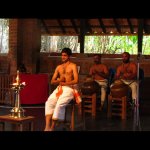

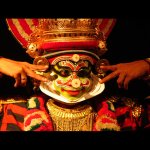
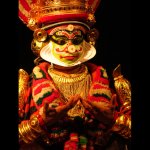
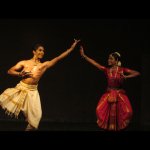
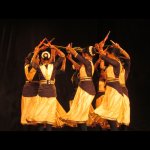
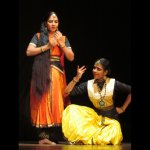
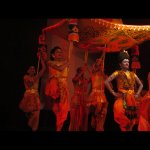
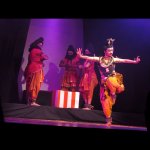
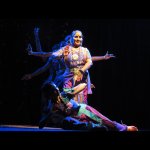

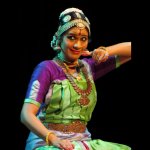

Apart from mainstream programs, there were other events taking place
across the city. The organization Poorvi from Kerala presented
Pakarnattam with afternoon lectures and evening performances at Spaces, a
very popular venue for compact number of rasikas. Sooraj Nambiar’s
lec-dem on concept of pakarnattam in Koodiyattam was followed by an
engaging talk by guru CV Chandrasekar on the etymology and technique of
narration employed in Bharatanatyam. Sooraj’s riveting Koodiyattam
performance of ‘Panadroopam’ held the audience spellbound as each of
Ravana’s faces registers different reactions to Sita’s rejection. Then
Ravana tells his heads not to quarrel and gives each of his ten heads a
part of Sita to enjoy - her lips, eyes, hair, neck, eyebrows etc. There
are no lyrics, only the perfectly synched non-stop beats of varying
speed on the mizhavu by the two maestros seated behind the artiste. The
performer is seated and does not move around the stage. All action is
centred on the facial muscles, eyes and hands. Yet the 90 minute
performance was riveting in its minimalism. In his lec-dem Sooraj had
already explained what he would present in the evening, so it was easier
for us to understand what was being portrayed. Bharatanatyam by the
popular Renjith Babu and Vijna Vasudevan was conducted by Guru CV
Chandrasekhar. Though the event was fairly well attended, it is a bit of
an uphill task to attract rasikas who are already juggling sabha
hopping during the season.
‘Sundara Kandam’ by Lakshmi Ramaswamy and group of almost 40 dancers was
marked by defined artistic formations by dancers of various age groups.
Fortunately, at no time were there too many on stage. Lakshmi herself
played the role of Sita, with long hair cascading over her shoulders
almost to her knee. (Long hair seems to be a trend this season! We had
Draupadi with natural long hair in ‘Vana Virata Vijayam.’). Some of the
young dancers trying to emote were very cute to watch! The monotony was
in the costumes as they were all of same design with only a change of
color in skirt for the characters.
More than solos, group productions seem to draw big crowds. The more in a
group, the more number of family and friends and the halls are actually
full to capacity! Almost 70 of Sheela Unnikrishnan’s well trained
students featured in ‘Sivamayam,’ replete with curly ringlets and
elaborate hair styles, jeweled crowns, flashy jewellery, and bodies
covered in blue, green and black hues. In well disciplined groups, they
merged and divided in precise artistic formations. There was never a
dull moment in the choreography as mythological characters entered and
exited in the back centre of the stage through an opening that also
served to frame the central character of the scene. Not only the hall,
but even the balcony was full at the Pethachi auditorium! This mega
dance drama was indeed a visual spectacle in all ways.
Waiting for another group production ‘Ardhanari’ to start, there was a
rasika sitting in the row behind declaring that she likes ‘dance
ballets’ better than solos (and she had thoroughly enjoyed Anita Guha’s
‘Vana Virata Vijayam’ and Sheela Unnikrishnan’s ‘Sivamayam.’) And the
dancers, especially the main artiste Parvathi Ravi Ghantasala, also
danced like in a ballet, not striking the floor with their feet,
treading softly, their ankle bells making hardly a jingle sound. Were
they trying to safeguard their feet? The dramatic appearance of Srikanth
as Ardhanari heralded some firm footwork and one finally heard the
ankle bells which were but mere accessories on the feet of the female
dancers. His alternating between tandava and lasya, his face divided by a
thin veil to differentiate the male and female makeup brought in some
interest in the production.
Brahma Gana Sabha presented some interesting performances of
mother-daughter duos for a week and dance dramas the next week. What
came across at programs in Pethachi auditorium was artists of the second
slot exceeding the time limits with very little time for the stage to
be prepared for the big productions. As it is, artistes don’t get tech
time and coupled with uncooperative tech people (‘the tech mafia’ as
artistes refer to them) of respective auditoriums towards guest tech
directors, one saw lights going off even as dancers were freezing into
sculpturesque poses or finishing off a particular scene as in
‘Ardhanari,’ not to forget the curtains still open when the stage was
being set for ‘Sivamayam.’
The number of dancers far exceeds the number of musicians for dance.
This is the time to make hay while the sun shines. So the musicians run
from one program to another, some even feigning illness if the other
offer is more lucrative, leaving many artistes high and dry at the last
minute. So where is the time for rehearsals? Simple solution. The
orchestra dictates to the dancer to perform known items so rehearsal is
not necessary! As the season draws to a close, the musicians are an
overworked and tired lot. And it shows through lackluster
accompaniment!
Slide show
ENVIRONMENTAL DANCE - A Photography Exhibition by Sam Kumar
Photos courtesy Sam Kumar
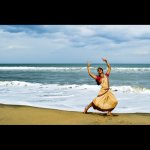
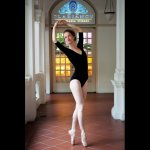

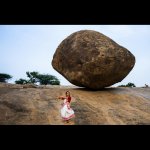
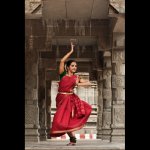
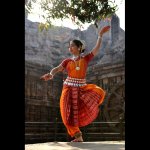
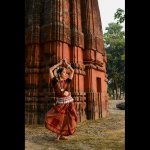
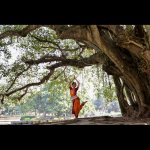
Environmental Dance was a photography exhibition combining dance and
nature by Sam Kumar at Art Houz Gallery where one saw Indian and
international dancers posing among architectural splendors like Konark
Sun Temple, rockscapes like Mahabalipuram monuments, on the waterfronts,
verdant landscapes of Kerala, as well as in striking settings in
Pondicherry, Bali and Singapore. Mio Ikeda is the most featured dancer.
The most striking among the 30 photos are the ones with the dancer
posing in front of the precariously balanced ‘butter rock’ in
Mahabalipuram and another where the dancer is framed by lace like
foliage of a sprawling tree in the Konark Sun Temple complex. “Away from
the comfort zone of the dance stage, the dancer was asked to react to
the natural outdoor environment. Interestingly, all the dancers of this
project confided that dancing in nature was an amazing and deeply
satisfying experience,” says Sam.
Lalitha Venkat is the content editor of www.narthaki.com
|





